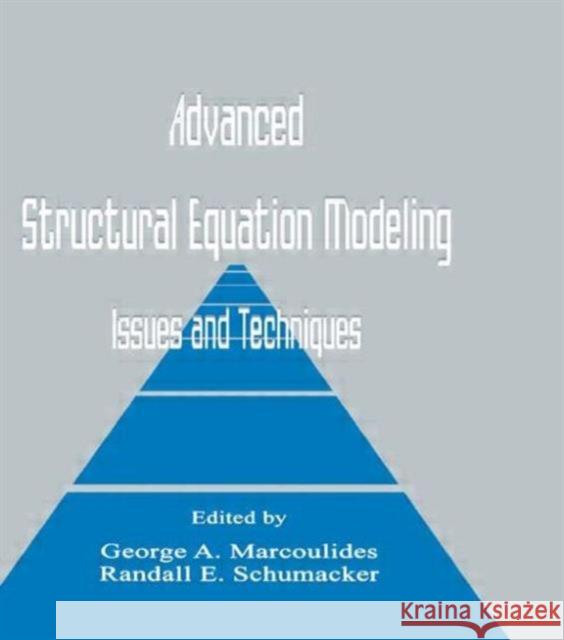Advanced Structural Equation Modeling : Issues and Techniques » książka
Advanced Structural Equation Modeling : Issues and Techniques
ISBN-13: 9780805818192 / Angielski / Twarda / 1996 / 376 str.
Advanced Structural Equation Modeling : Issues and Techniques
ISBN-13: 9780805818192 / Angielski / Twarda / 1996 / 376 str.
(netto: 670,84 VAT: 5%)
Najniższa cena z 30 dni: 654,86
ok. 22 dni roboczych
Dostawa w 2026 r.
Darmowa dostawa!
Structural equation models are used by biologists, educational and medical researchers, psychologists, social scientists and others who traditionally deal with nonexperimental and quasi-experimental data. Perhaps the most important and influential statistical revolution to have recently occurred in the scientific arena, the development of structural equation models has provided researchers with a comprehensive method for the quantification and testing of theories. Accepted today as a major component of applied multivariate analysis, structural equation modelling includes latent variables, measurement errors in both dependent and independent variables, multiple indicators, reciprocal causation, simultaneity and interdependence. As implemented in most commerical computer packages - Amos, EQS, LISREL, LISCOMP, Mx, SAS PROC-CALIS, STATISTICA-SEPATH - the method includes as special cases such procedures as confirmatory factor analysis, multiple regression, path analysis, models for time-dependent data, recursive and non-recursive models for cross-sectional and longitudinal data, and covariance structure analysis.
By focusing primarily on the application of structural equation modeling (SEM) techniques in example cases and situations, this book provides an understanding and working knowledge of advanced SEM techniques with a minimum of mathematical derivations. The book was written for a broad audience crossing many disciplines, assumes an understanding of graduate level multivariate statistics, including an introduction to SEM.











